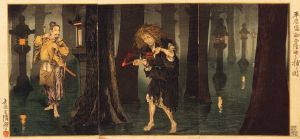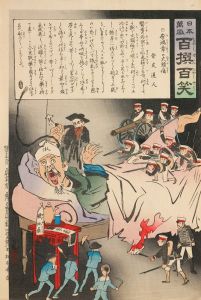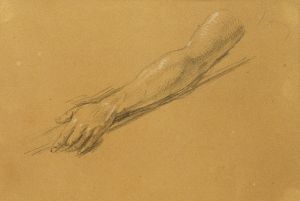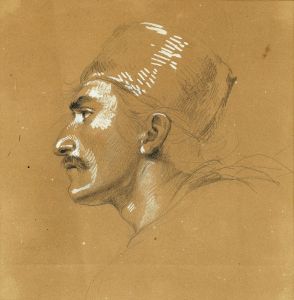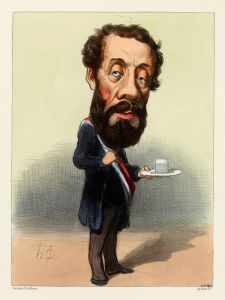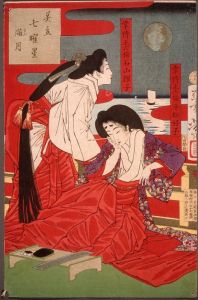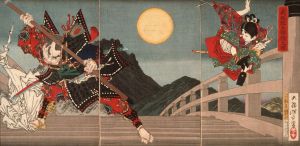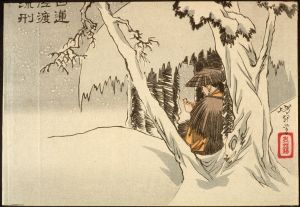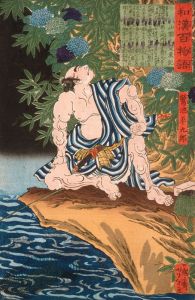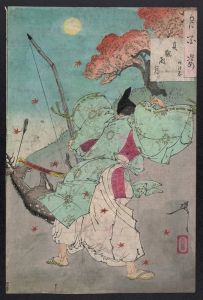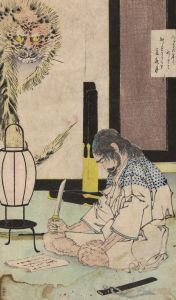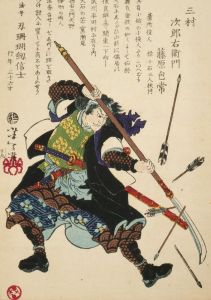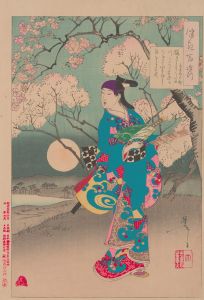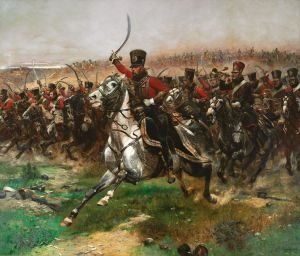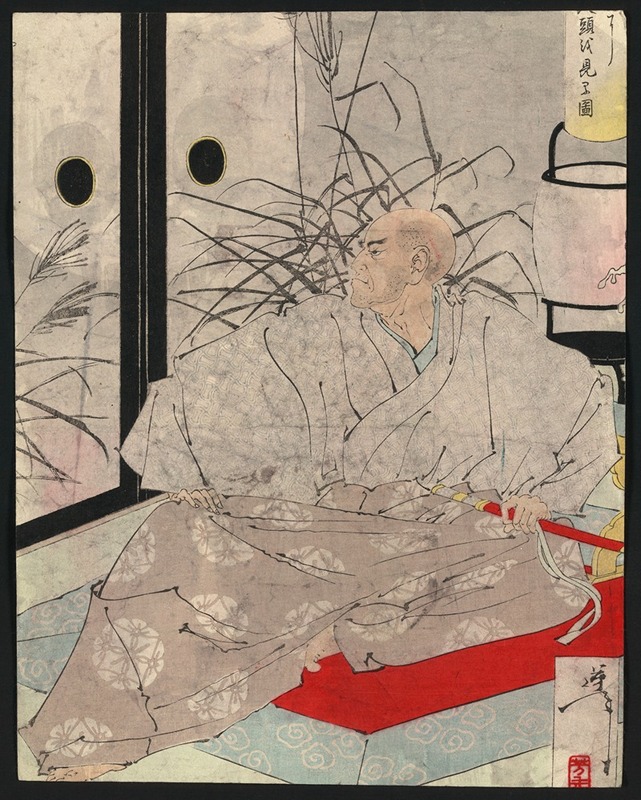
Taira no Kiyomori
A hand-painted replica of Tsukioka Yoshitoshi’s masterpiece Taira no Kiyomori, meticulously crafted by professional artists to capture the true essence of the original. Each piece is created with museum-quality canvas and rare mineral pigments, carefully painted by experienced artists with delicate brushstrokes and rich, layered colors to perfectly recreate the texture of the original artwork. Unlike machine-printed reproductions, this hand-painted version brings the painting to life, infused with the artist’s emotions and skill in every stroke. Whether for personal collection or home decoration, it instantly elevates the artistic atmosphere of any space.
Tsukioka Yoshitoshi, a renowned Japanese ukiyo-e artist of the late Edo and early Meiji periods, is celebrated for his innovative and dramatic woodblock prints. Among his notable works is the depiction of Taira no Kiyomori, a powerful military leader and politician from the late Heian period of Japan. Yoshitoshi's portrayal of historical figures often combines vivid imagery with a deep understanding of the cultural and historical context, and his depiction of Taira no Kiyomori is no exception.
Taira no Kiyomori (1118–1181) was a prominent member of the Taira clan, which rose to power during the late Heian period. He is best known for his role in establishing the first samurai-dominated government in Japan and for his involvement in the Genpei War, a conflict that ultimately led to the rise of the Minamoto clan and the establishment of the Kamakura shogunate. Kiyomori's life and career were marked by both his military prowess and his political acumen, which allowed him to navigate the complex court politics of the time.
Yoshitoshi's depiction of Taira no Kiyomori captures the intensity and drama of the historical figure's life. Known for his dynamic compositions and expressive use of color, Yoshitoshi often infused his prints with a sense of movement and emotion. In his portrayal of Kiyomori, Yoshitoshi likely emphasized the leader's commanding presence and the turbulent era in which he lived. While specific details of Yoshitoshi's print of Taira no Kiyomori may vary, his works typically reflect a blend of realism and stylization, characteristic of the ukiyo-e tradition.
Yoshitoshi's interest in historical and legendary figures was part of a broader trend in ukiyo-e art, which often drew inspiration from Japan's rich history and folklore. His prints frequently depicted scenes from classical literature, kabuki theater, and historical events, providing a visual narrative that was both educational and entertaining for contemporary audiences. By focusing on figures like Taira no Kiyomori, Yoshitoshi contributed to the popularization of historical narratives and helped shape the public's understanding of Japan's past.
The late Edo and early Meiji periods were times of significant social and political change in Japan, and Yoshitoshi's work reflects these transitions. As Japan opened to the West and modernized, traditional art forms like ukiyo-e faced challenges but also opportunities for innovation. Yoshitoshi's ability to adapt and incorporate new techniques while maintaining the essence of traditional Japanese art made him a pivotal figure in the art world of his time.
In summary, Tsukioka Yoshitoshi's depiction of Taira no Kiyomori is a testament to his skill as an artist and his deep engagement with Japanese history and culture. Through his work, Yoshitoshi not only captured the essence of a historical figure but also contributed to the enduring legacy of ukiyo-e as a vital part of Japan's artistic heritage.





